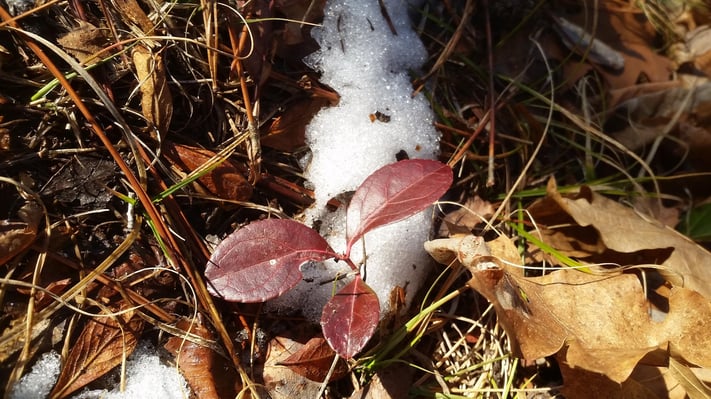Getting to Know Wintergreen
Checkerberry. Teaberry. Eastern teaberry. Creeping Wintergreen.
Gaultheria procumbens carries with it many names, including that of 18th century physician Jean-Francois Gaultier (more on that later). What I love most about this short, 3-6" tall plant is how the tough, woody, wiry stem gives way to a horizontal, miniature canopy of three or four leaves. I have always been drawn to Ericaceacous plants, perhaps because they can thrive in sand (and I happen to love the New England coast). These plants are rugged, but if you look closely enough at the right time of year, some will reward you with a velvety, colorful flower.
Wintergreen's pink flower is showy, but tiny. Like that of the huckleberry or the blueberry, wintergreen flowers are silky soft ("waxy") and bell-shaped, emerging at the point at which the leaves meet the stem. Following a summer bloom, bright red berries take the flowers' place. Over the winter, the evergreen leaves slowly change in hue from deep, glossy green to a deep maroon and purple.
Gaultheria procumbens
Wintergreen, spotted along the ridge line of High Ledges Wildlife Sanctuary in Shelburne, Massachusetts in late December. (C) Kate Cholakis, 2016
Living with Wintergreen
Deer will browse wintergreen, particularly in the winter. Squirrels, chipmunks, red fox, black bear, and wild turkey may also snack on it. Returning to the names, oil extracted from the leaves has a wintergreen taste and scent. It is possible to make tea from the dried leaves, although most people tend to avoid it, as the oil can be toxic (for more information on that, start here). Gaultier was impressed by the qualities of the tea, but Native Americans had been using the plant in this way long before his "discovery." Checkerberry appears to derive from checkers/chequers, "berries of the service tree" (perhaps because the berries look similar?).
This rhizomatous plant can appear sparse when you stumble upon it growing in the understory of pine and hardwood forests in New England and south along the east coast, but it can grow densely as a groundcover in the right conditions, which include:
- Sandy, acidic, organic, well-drained soils
- Part shade
- Moderate amounts of water (not standing water, not always dry)
- Cool(ish) summers
In the garden, plant it underneath taller plants that prefer acidic soils. Draw inspiration from its natural associations, such as huckleberry, blueberry, mountain laurel, raspberry, witchhazel, and bog Labrador tea, among others. Interplant with partridgeberry. I wouldn't expect it to grow into a thick carpet; although, it might very well surprise you.

